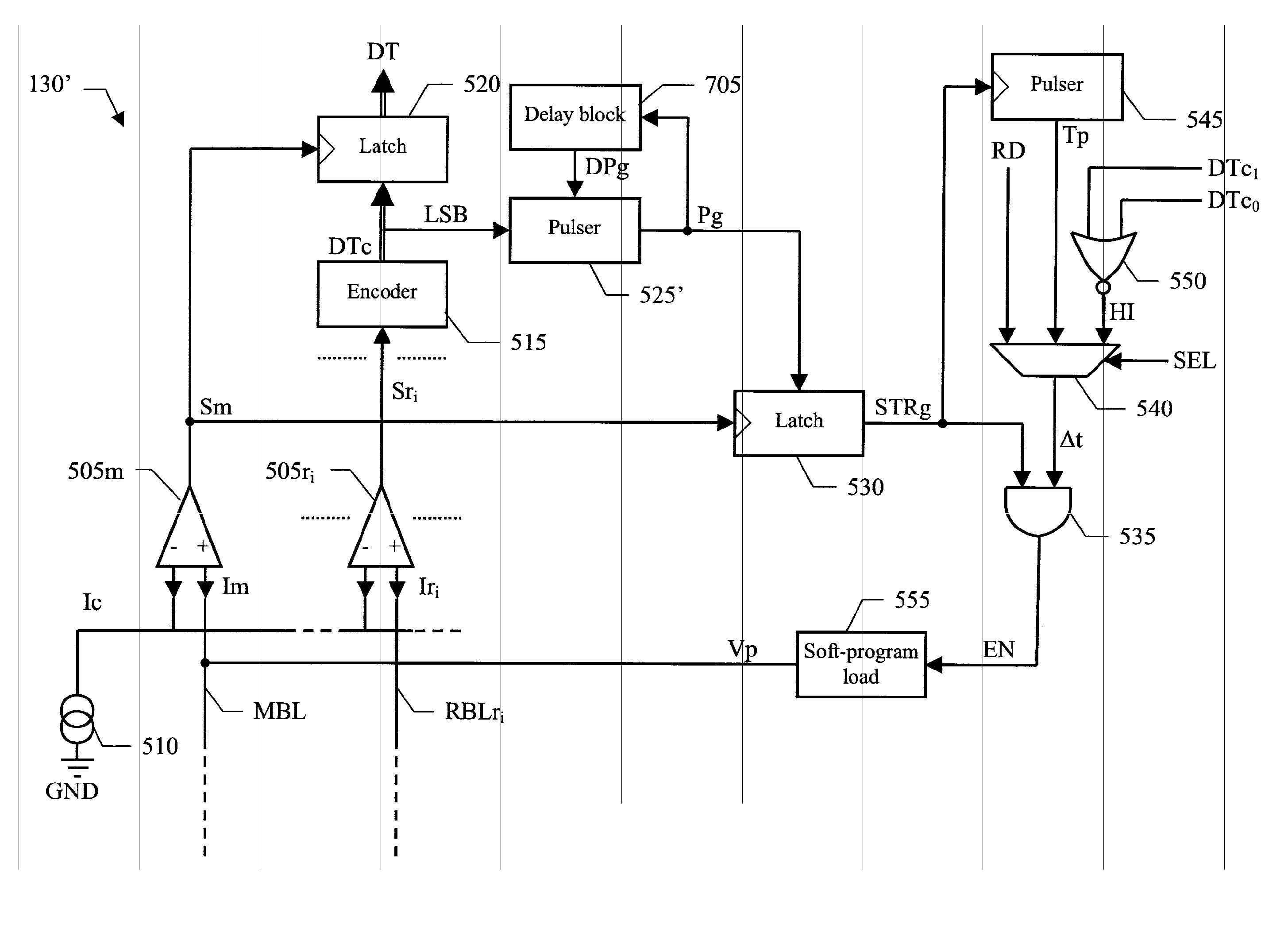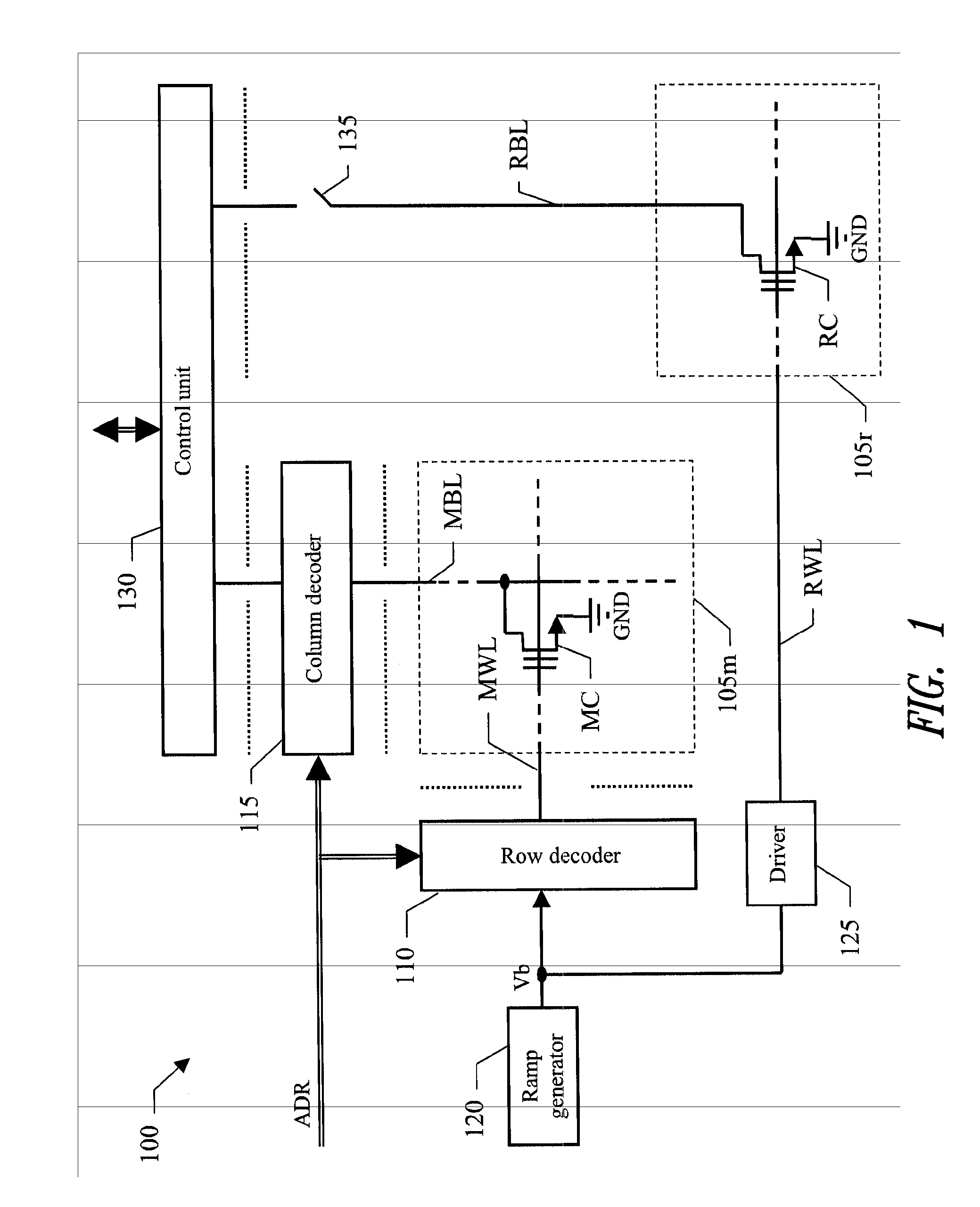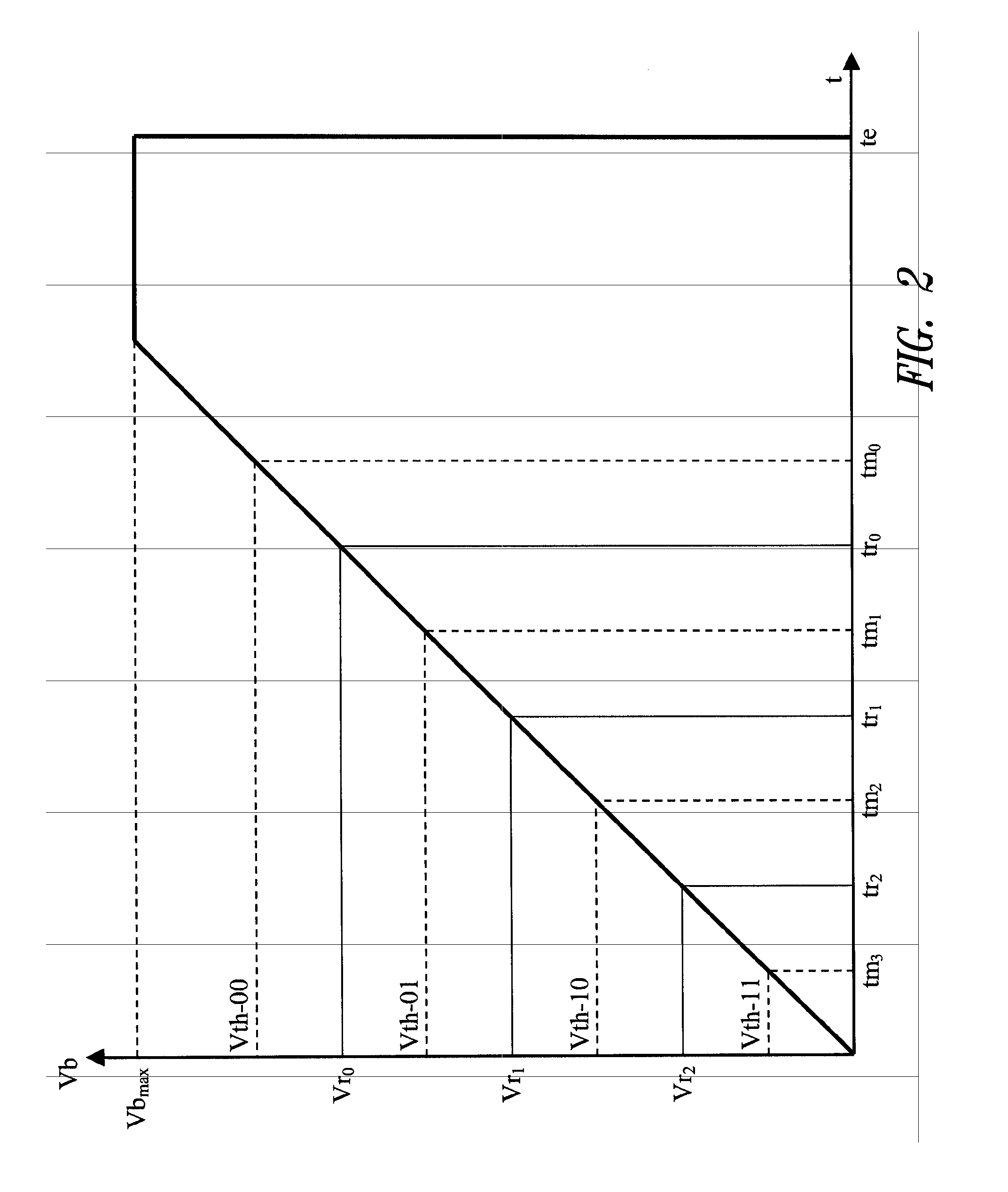Method and system for refreshing a memory device during reading thereof
a memory device and reading technology, applied in the field of memory, can solve the problems of wasting space for storing control information in the structure used to implement the ecc, changing the logical value stored, and retaining data,
- Summary
- Abstract
- Description
- Claims
- Application Information
AI Technical Summary
Benefits of technology
Problems solved by technology
Method used
Image
Examples
Embodiment Construction
[0037] With reference in particular to FIG. 1, a non-volatile memory device 100 (for example, consisting of a flash E2PROM) is illustrated. The memory device 100 is integrated in a chip of semiconductor material, and includes one or more sectors (only one shown in the figure), each one formed by a matrix 105m of memory cells MC. Each memory cell MC consists of a floating gate MOS transistor with a programmable threshold voltage. The memory cell MC in a non-programmed (or erased) condition exhibits a low threshold voltage. The memory cell MC is programmed by injecting electrical charge into its floating gate; the memory cell MC can be programmed to multiple levels, each one associated with a corresponding range of its threshold voltage. Each level represents a different logical value; for example, the memory device 100 operates at 4 levels, so that each memory cell MC stores a logical value consisting of 2 bits (11, 10, 01 and 00 for increasing threshold voltages). Conversely, the me...
PUM
 Login to View More
Login to View More Abstract
Description
Claims
Application Information
 Login to View More
Login to View More - R&D
- Intellectual Property
- Life Sciences
- Materials
- Tech Scout
- Unparalleled Data Quality
- Higher Quality Content
- 60% Fewer Hallucinations
Browse by: Latest US Patents, China's latest patents, Technical Efficacy Thesaurus, Application Domain, Technology Topic, Popular Technical Reports.
© 2025 PatSnap. All rights reserved.Legal|Privacy policy|Modern Slavery Act Transparency Statement|Sitemap|About US| Contact US: help@patsnap.com



